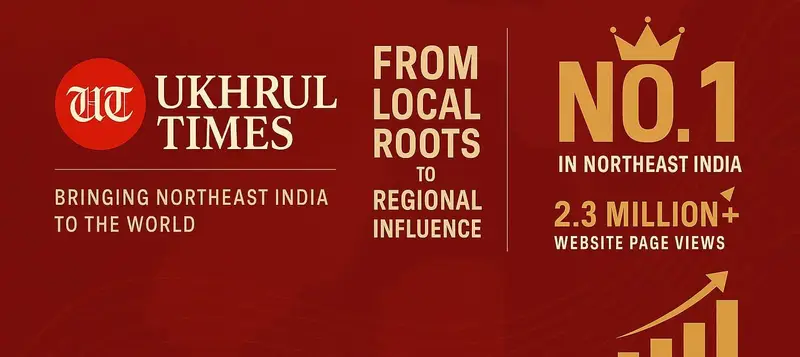Now Reading: Tribal Approach in Manipur
-
01
Tribal Approach in Manipur
Tribal Approach in Manipur

THE ONGOING turmoil in Manipur, which erupted on May 3, 2023, following a peace rally by the All Tribal Students’ Union (ATSUM) to protest the Meitei community’s demand for Scheduled Tribe (ST) status, highlights the complexity of the state’s socio-political landscape. Chief Minister N Biren Singh’s recent statement on January 8, 2025, attributing the unrest to this demand, marks a shift from his earlier emphasis on combating narcotic terrorism, which I think is a positive posturing. This change in narrative reflects the deepening political crisis, but it also raises important questions about the roots of the violence and the failure to achieve peace.
The crisis in Manipur is not merely a result of the demand for ST status by the Meiteis but also involves long-standing ethnic and political tensions between the Meitei-majority valley and the tribal communities of the hills. These communities have historically been divided over issues of identity, political representation, and resource allocation.
Opinion | Article 371-C Provides for “Hill Areas” and Maintaining Its Sanctity
The tribals in the Hill Areas of Manipur fears that the constitutional safeguard under Article 371C could be rendered meaningless and a flood gate of further exploitations opened if they are clubbed together with majority Meitei community as ST of the state. As such the demand of the Meiteis is perceived by many tribal groups as a treat to their own social and economic standing, further fuelling resentment and conflict.
Another contributing factor for the continuing unrest is the role of the state and central governments in managing this sensitive issue. Despite the changing narratives, there has been little progress in addressing the core grievances of both communities. The inability of the state and central authorities to forge a meaningful dialogue and find a lasting resolution has perpetuated the cycle of violence. Moreover, political leaders in the state have often used the situation for short-term gains, exacerbating divisions rather than promoting reconciliation. Resentment of the Kuki-Zo group over the centre government’s reluctance to change the leadership in the state is also palpable.
One of the crucial questions everyone is asking now is the resettlement of the more than 60,000 displaced persons. Will they be willing to go back to their original dwelling places after having experienced such ugly incidences and knowing fully well that both the communities’ militias are still armed to the teeth and are at large? They may not lay down their arms or relinquish their new found power and status any time soon. It will not be an easy task for the government to restore normalcy in the state but a reconciliation process has to start somewhere.
For such a democratic process to take place, political leaders should not shy away from addressing the deeper, structural issues at the heart of the conflict. Effective peacebuilding requires not just managing violence, but also creating an inclusive political framework that acknowledges the diverse needs and aspirations of all communities in the state. Appointment of Ajay Kumar Bhalla as the new governor of the state recently is seen towards this end.
Opinion | ‘Scheduled Tribe’ tag is a must for survival of Meetei (Meitei) – Why?
Historically the Hill Areas of Manipur was not a part of the state until 1891 when the British brought the tribals of the hills with the valley under their rule. However, they made sure that the administration of the hill areas was separated from the valley. The hills administration was in the hands of one British Officer designated as the president of the Manipur State Durbar. Sir Churachand Singh, the Maharaja of Manipur was desperate to bring the tribals under his direct administration that he included a condition in his proposal to join the federation under the Government of India Act, 1935 if Government of India accept to hand over the administration of the hill tribes of Manipur to the state authority. It was rejected on historical reasons. Manipur was a controversial topic during this period because the Political Agent did not consider the hill areas as an integral part of Manipur State. However, the plan of federation failed to come to fruition because of opposition from many quarters in India. On the eve of Indian independence, Manipur Hill People’s Regulation Act, 1947 was enacted separately for the administration of hill tribals. When Manipur was upgraded to a Union Territory in 1956, seats were reserved for the tribals. The Government Union Territories Act 1963 had special provisions for the Hill Areas of Manipur. Manipur Hill Areas Village Authorities Act,1956, the Manipur Land Revenue and Land Reform Act,1960 are testaments of this legacy of separate administration. When Manipur was on the threshold of attaining a full-fledged state, the parliament enacted a law call Manipur (Hill Areas) District Council Act, 1971 for the administration of the hill areas. Latter Article 371C was incorporated to the constitution of India to safeguard and protect the interest of the tribals in the hill areas when Manipur got statehood in 1971. Still seeing the inadequate governance in the hill areas, three successive governments headed by Chief Minister RK. Ranbir Sing on 13th May 1991, Chief Minister, RK. Dorendra Singh on 17th August 1992 and Chief Minister, Radhabinod Koijam on 28 March 2001 had recommended for the extension of the Sixth Schedule to the Hill Areas of Manipur with certain local adjustment. The state has so far been ignoring centre government’s queries as to what that rider ‘with certain local adjustment’ should mean.
The Government of India’s approach to use constitutional provisions for autonomous governance framework for tribal areas to settle the Naga and Kuki-Zo issues as seen in peace processes highlights the delicate political balancing act the centre is trying to navigate. Any self-governance in tribal areas, is seen by many as a way to address the demands for greater autonomy from various tribal communities. The challenge, however, lies in the fact that the Naga issue is fundamentally different from the demands of the Meitei or Kuki communities, especially in terms of political aspirations and territorial claims.
The situation in Manipur is further complicated by the unresolved Naga issue, which has been a longstanding and sensitive matter for the Government of India. The Naga peace talks, which have been in limbo for years, are another significant challenge for the government, as it seeks to find a way to balance the demands of various ethnic groups within the region. The Naga peace process, which has seen progress over the years, is fundamentally rooted in the Naga community’s demand for creation of a Naga homeland. The signing of the Framework Agreement with the Nationalist Socialist Council of Nagaland (NSCN-IM) in 2015, followed by the subsequent agreements with other Naga groups, has raised hopes for a resolution. However, this process has remained stalled due to disagreements over issues such as a separate flag and constitution of the Nagas. The introduction of constitutional provision could either be seen as a positive step toward decentralization for the Nagas, or as an infringement on their broader political aspirations. So it will be imprudent for the centre government to use it as a bargaining chip to seal the Indo- Naga talks but, as a step towards a peaceful resolution. Trying to solve the issue with a single master stroke may not work in the present situation in Manipur. A one-at-a-time solution seems to be the more imaginative approach.
Also read | Sparks of Naga Freedom Movement
Apprehensions of the government that, for the Kuki-Zo, the issue is also tied to territorial claims and ethnic recognition, particularly in light of the violent clashes between the Meitei and Kuki-Zo communities in recent months is conspicuous. So offering a constitutional protection in the form of a ‘separate administration’ for the Kuki-Zos sans the Nagas might help them to secure more autonomy over a certain territorial jurisdiction, but it also risks creating further tension with the other communities. From the government’s perspective, offering autonomy or similar arrangements then for the Kuki-Zo and Naga communities separately might seem a pragmatic way to create a solution that acknowledges the distinct identity and governance needs of each group. However, this approach too risks deepening of the existing divisions, as it may be perceived as privileging one community’s demand over the other’s leading to more tensions because it involves land issue which is aggravated by demographic changes in recent times.
Editorial | ‘Hingminashi Eikhoi’ in the 90s, once an honest call for unity in diversity
No doubt the issue is complex and the challenges are many, but the fragile situation in the state demands an earlier resolution to the conflict. It can go from bad to worse. Therefore taking a tribal approach may save the government from seeking an awkward communal solution for the simple reason that tribal is a constitutional category not a community. Moreover Hill Areas is already an accepted constitutional demarcation. I am sure the tribals in Manipur do not have issue with the Meiteis/Meeteis being included in the Schedule Tribe list provided the existing Schedule Tribes in the Hill Areas of Manipur are considered a separate constitutional protection besides the present safeguard first. A nuanced tribal based solution could be the right mantra.
Ngachonmi Chamroy is a senior activist. He is a Naga who has a long association with various student bodies including ATSUM and other civil organisations. Views are personal. The writer may be reached at chamroy1@hotmail.com.
(The opinions expressed in this article are those of the authors and do not necessarily reflect the views of Ukhrul Times. Ukhrul Times values and encourages diverse perspectives.)
Must read | Authority and Grassroots

















Ayush Pokhrel
Thank you for such a detailed analysis